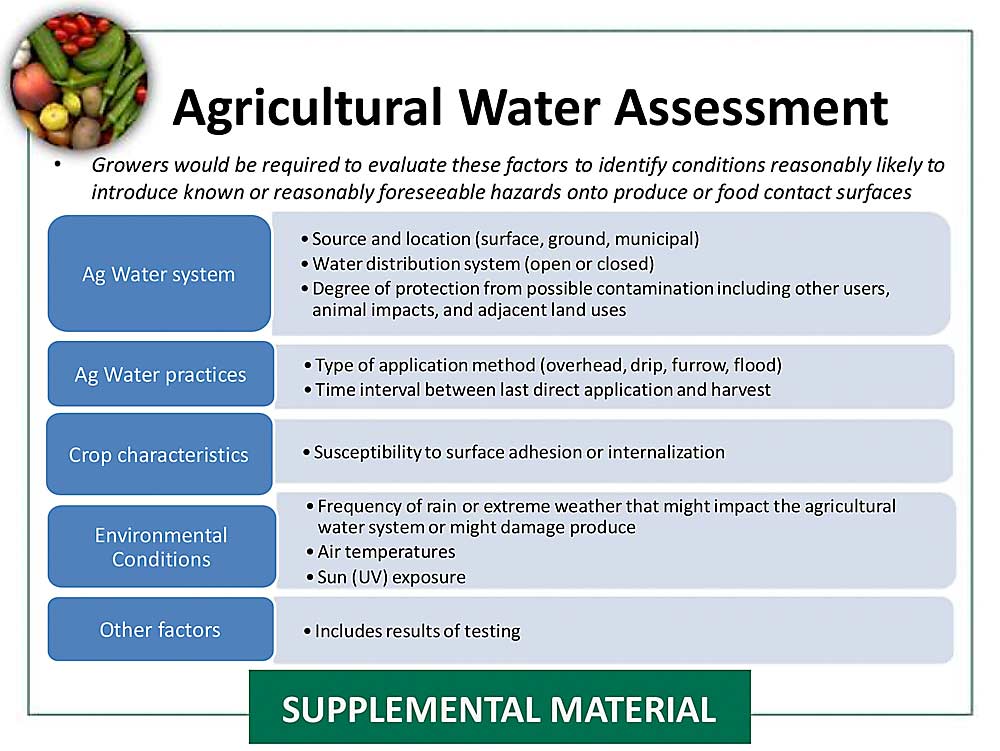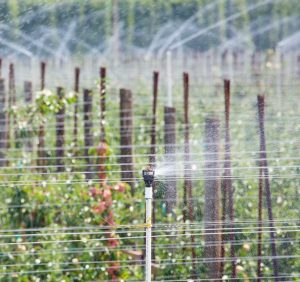
It’s been over a year since the U.S. Food and Drug Administration proposed a new approach to food safety regulations for on-farm water quality, but produce growers are still waiting for the rule to be finalized.
At the Washington State Tree Fruit Association Annual Meeting in December in Wenatchee, a representative from the Produce Safety Alliance shared an update on how the organization plans to help growers prepare.
The new approach pivots away from testing as the primary measuring stick and toward an annual assessment of the overall quality of farm production water.
This puts the burden on growers to explain how their systems would prevent pathogens from contaminating produce, said Donna Clements, coordinator for the Produce Safety Alliance. The alliance is a collaboration between Cornell University, the FDA and the U.S. Department of Agriculture to help growers comply with the myriad new requirements under the Produce Safety Rule, which is the implementation of the 2011 Food Safety Modernization Act.
Most of the rule has long been finalized. However, in response to public comment, in late 2021 the FDA proposed changes to the portion regarding production water, or preharvest water, that contacts fruits and vegetables or food contact surfaces. That includes water used up to four days before harvest for irrigation that contacts the crop, for overhead cooling, and to mix pesticides.
The proposed rule would require growers to perform an annual agricultural water assessment that documents water system hazards and their potential to contaminate produce.
The assessment would evaluate potential risks associated with the characteristics of the crop; environmental conditions such as rain; any hazard to the water source; and exposure of potential contaminants to the canals, pipes or creeks that carry water to the farm. Those potential food safety risks include animals and other nearby land uses. If the assessment showed a “reasonably foreseeable hazard” that poses a potential risk to produce, growers would be required to mitigate, which might include treating water or extending the time between last application and harvest to at least four days.
The assessments will be complex, Clements warned. The Produce Safety Alliance plans to update extension fact sheets, post ag water assessment templates on its website and hold hands-on workshops, Clements said.
If you already test, as most fruit growers do, continue, she advised. If you don’t, consider testing as a good way to get baseline information about your water while you ramp up for the assessments.
The Northwest Horticultural Council has submitted comments on the FDA’s proposal, arguing that current fruit industry practices mitigate contamination risk even under “worst case scenarios,” said Kate Tynan, senior vice president.
The Yakima-based organization also plans to work with other tree fruit groups to provide assessment templates and hold trainings.
“Please know you’re not going to be alone as you’re trying to develop these agricultural water risk assessments,” Tynan said.
The Produce Safety Rule also governs postharvest water, such as water used in packing. Nothing has changed about those regulations, and they took effect in January this year for businesses with more than $500,000 in annual sales. The same regulations will take effect in January 2024 for businesses with annual sales between $250,000 and $500,000; for those under $250,000, the regulations will be in effect January 2025.
—by Ross Courtney







Leave A Comment